Early childhood tooth decay is not something I ever imagined I would need to research. It’s not a topic I expected to have experience with. And to be honest, it’s not something I am at all excited to share about.
But since I felt the initial shock of discovering decay spots on my toddlers teeth a few weeks ago, early childhood tooth decay has been the theme of my thoughts, a constant conversation topic in my house and the subject of virtually all my googling for the past three and a half weeks.
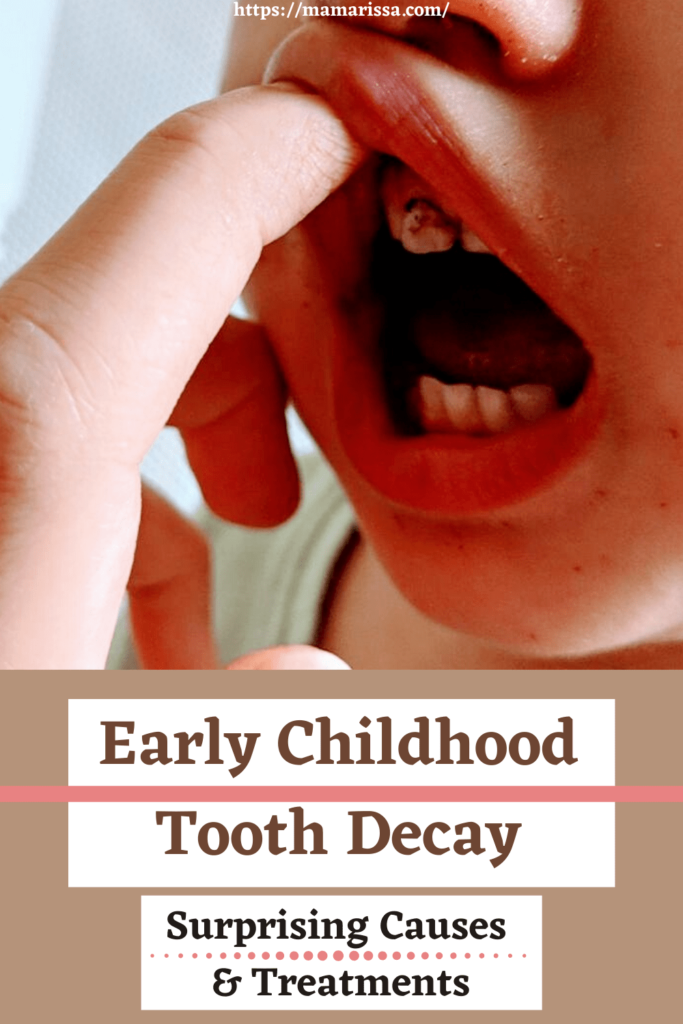
So, because the painful topic of early childhood tooth decay is all my brain can focus on right now and because I know I’m not alone in needing answers and solutions, I’m going to share with you what I have discovered.
Please note that I am not a medical or oral health professional and nothing in this post should replace consultation with a qualified dentist or doctor.
Hey Mama, if you find my blog posts helpful, would you help support this blog by making product purchases through the links on this page? It will not cost you any extra but the commissions I receive as an Amazon and brand affiliate help to cover the costs of operating this blog so that I can keep it running ad-free. Thank you so much for your support. You are literally the reason this blog was started and the fuel that motivates me to keep it going!
Scroll to the bottom of this post for a 10% off discount code on the PurO3 ozone oil that helped protect my daughter’s teeth from further decay!
The Truth About Early Childhood Tooth Decay
Before we start researching, let me just clarify some things about early childhood tooth decay. I had some misconceptions about this subject until I found myself dealing with it personally, and I imagine you might too, Mama.
Facts
- Early childhood tooth decay is not necessarily a sign of neglect or neglectful brushing.
- Early childhood tooth decay can present itself even in children who have healthy diets.
- Early childhood tooth decay is common and no child is automatically immune, regardless of lifestyle or socioeconomic status.
If you’re dumbfounded to learn of your child’s tooth decay, you’re not alone. It’s not as unlikely to affect your child as you may have thought.
I have always had naturally great oral health and my husband doesn’t have any major dental problems – maybe a filling or two. So without any apparent genetic predisposition for tooth enamel problems and our low-no sugar or junk food diets, seeing decay on my 2-year-old daughter’s teeth was jarring and disturbing.
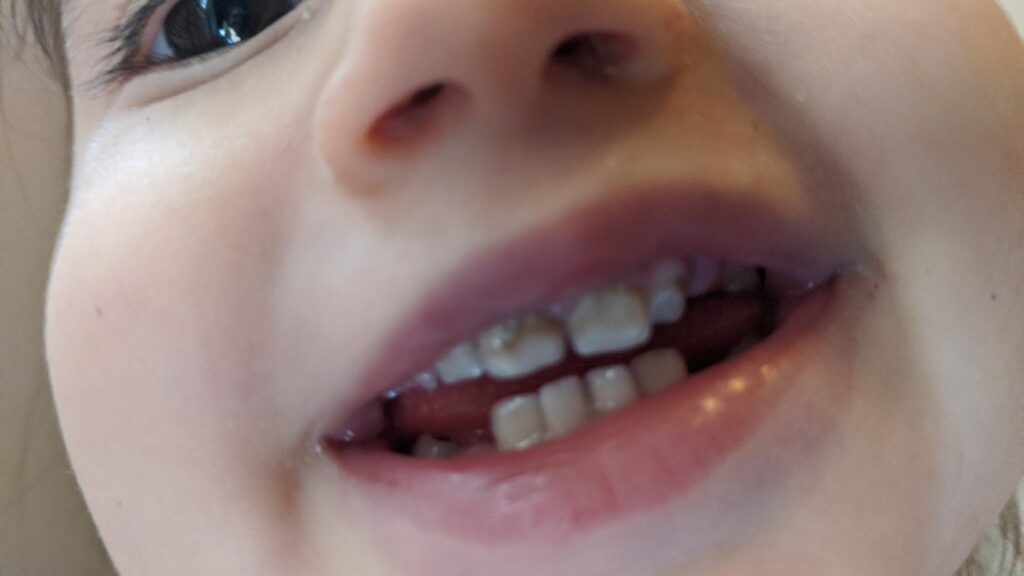
I wrote a post not quite a year ago on caring for a toddler’s teeth. After doing the research for that post, I determined I was doing the best thing by brushing my daughter’s teeth as well as she would let me with a wet toothbrush every morning and evening.
At the recommendation of my daughter’s pediatrician, I planned to take her to the dentist once she was two to avoid unnecessary trauma to my timid, very attached little toddler (this is a common recommendation despite the fact that some say to take your baby once the first tooth appears).
I actually questioned at one point whether I should take her in sooner just in case, even though I knew she wouldn’t have any decay (never assume). Now I regret that I didn’t.
In my wildest dreams, I never thought we would be dealing with decay less than a year later. But here we are, seemingly against all odds, facing a problem completely foreign to me that I must deal with nonetheless.
So, Mama, you’re facing early childhood tooth decay with your little one? I can now officially assure you from experience that you are not a bad mom because your child has this condition. You are a good mom because you are doing your best to find a solution.
I’m not going to lie, I am struggling with a lot of my own guilt because … I’m a mom. And what kind of normal mom would I be if I didn’t feel guilty every time my child has a problem?
But Mama, you need to hear this as much as I do: You are working hard to meet your child’s needs but you can’t control every area of his health and well-being.
What you can do is respond carefully and diligently to the unexpected. And don’t forget to take a break to recharge when necessary. Your mothering skills are only in as good of shape as your mental and physical health.
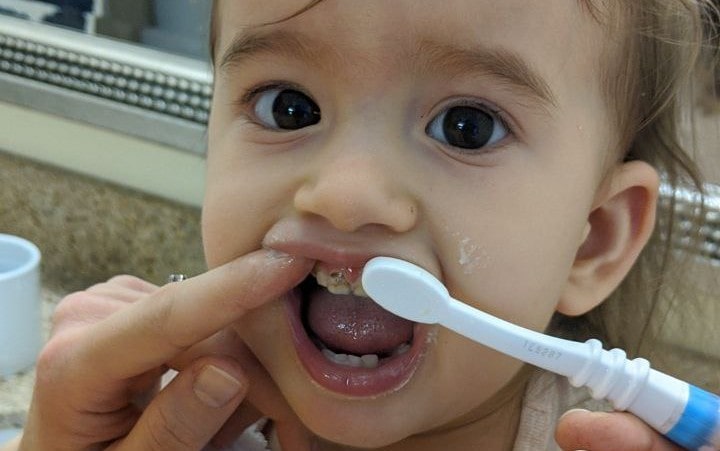
In fact, why don’t you go ahead and take a breather right now. Just close your eyes for a few seconds and focus on your breathing to calm your mind and body.
Okay, now that you’ve had the mama’s equivalent of relaxing time, let’s figure out how to tackle this decay beast!
Possible Causes of Early Childhood Tooth Decay
1. Antibiotics
When I took my daughter for an “emergency” visit to the dentist a few weeks ago to have them put a sealant on her teeth to stop the decay and the sensitivity, I asked what could have caused the decay. The hygienist immediately asked if I had had any antibiotics during my pregnancy.
As a sick feeling washed over me, I responded that I had a ton of them during my long labor. The hygienist nodded and said confidently, “That’s it.”
Read my birth story here!
Since that visit, I have been searching for scientific evidence that antibiotics during pregnancy have been linked to early childhood tooth decay. I found one study of lab rats which clearly indicated the use of antibiotics during pregnancy affected the mineralization and structure of the enamel on the offspring’s teeth.
I have also read about several other moms who have been told by their child’s dentist that antibiotics during pregnancy can lead to early childhood tooth decay.
However, I have not found any proof that antibiotics during labor can cause primary (baby) teeth defects, which makes sense since the development of these teeth happens throughout pregnancy beginning as early as 6 weeks gestation. By the time mama is in labor, all the baby teeth are formed.
But, as I’ll get to shortly, it would seem that antibiotics did play a role in my daughter’s tooth decay in a less obvious way.
So if you took antibiotics during your pregnancy, it may or may not have caused or contributed to your child’s tooth decay. But even if it did, try to keep in mind what everyone has been reminding me of lately – taking antibiotics that result in your child having tooth decay is likely a better outcome for your little one than whatever would have resulted from not taking the antibiotics.
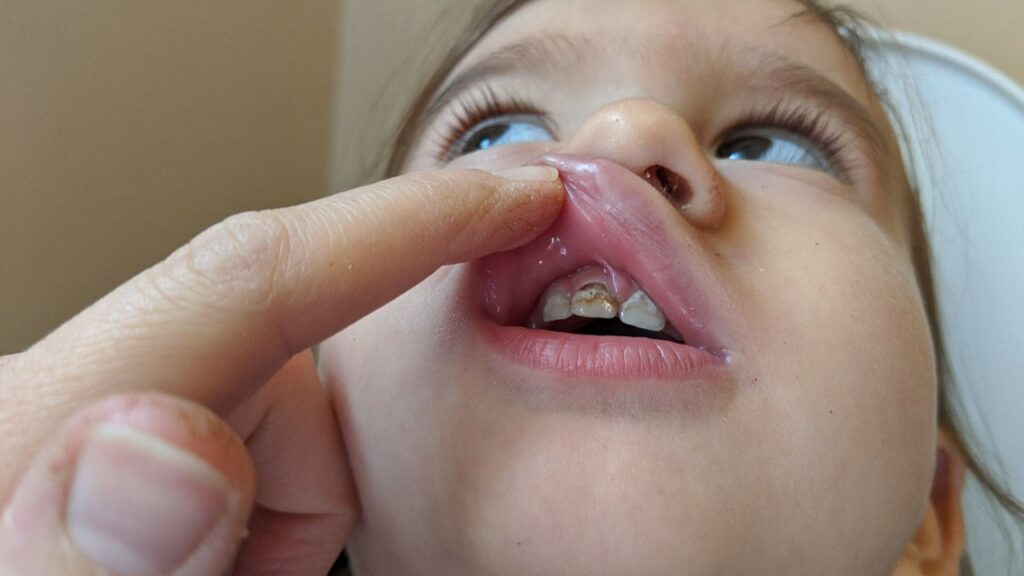
2. Breastfeeding
Whether or not breastfeeding – or extended breastfeeding – causes or contributes to early childhood tooth decay is currently being debated. While there is research proving the point of both sides, a lot of that research is often attacked as being weak.
The “breastfeeding causes tooth decay” group claims that sugar is sugar regardless of the source. They say the sugar in breastmilk feeds enamel eroding bacteria on children’s teeth, particularly when breastfeeding occurs during sleep.
On the other hand, the “breastfeeding does not cause tooth decay” group emphasizes that breastmilk is healthy and actually contains an element that kills off some decay-causing oral bacteria.
They also insist that breastfeeding and bottle feeding are very different since breastmilk does not continually leak from the breast the way a bottle does. They state that the nipple is pulled too far into the mouth for the teeth to be washed in breasmilk, absolving breastfeeding as a cause of baby bottle tooth decay.
The general consensus among non-extremists seems to be that breastfeeding may contribute to early childhood tooth decay among other factors. In my daughter’s case, I believe her incessant on-demand breastfeeding might have partially contributed to her tooth decay (for reasons explained below), but I do not see it as THE culprit.
Find out what ecological breastfeeding is and why some mamas do it in this post!
3. Nutrient Deficiency/Malabsorption
There is a theory floating around that a lot of people are suffering from malnutrition and consequently experiencing various health conditions, one of which is tooth decay.
When I say malnutrition, I’m not talking about not getting enough food to fill your belly. I’m talking about how the majority of that food is either lacking in important vitamins and minerals or lacking the ability to transfer those vitamins and minerals into the body.
The more I read about health and wellness, the more I discover that every part of the body is interconnected with each other.
Did you know that each tooth has 3 miles of nutrient-transporting tubules? How crazy is that! Obviously, if God put that much thought into how to transport necessary supplies from other areas of the body to each tooth, there is a whole lot more going on in the mazes inside of us than we realize.
But the point is, teeth need a steady flow of nutrients in order to stay healthy and fight decay. If your child’s body is not getting enough necessary vitamins and minerals or if they are not being absorbed, her body is going to delegate any nutrients that do come in to be used for the most essential functions.
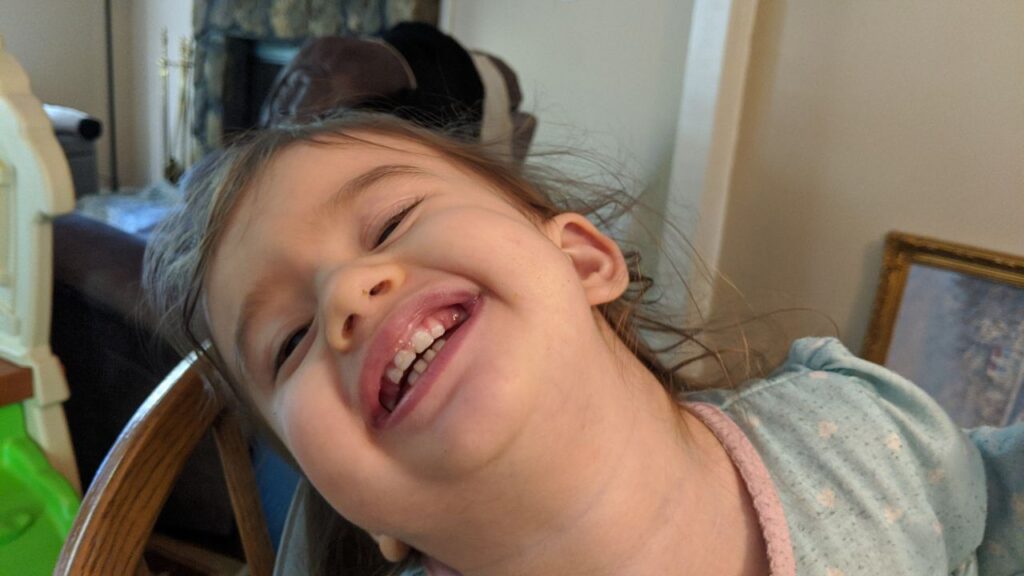
Teeth are pretty low on the list of essential functions in comparison to other organs, so nutrients will be taken away from the teeth in order to feed other areas of the body. If your little one is exhibiting early childhood tooth decay, it could be that she is lacking nutrients which are important for teeth to be able to repair and protect themselves.
4. Candida Overgrowth
This is, for me, the most surprising yet realistic cause of my daughter’s early childhood tooth decay. Candida is a healthy fungus/yeast the body naturally creates in the gut, vagina, throat and mouth. But when your child’s microbiome is out of balance, candida can over-produce and cause problems.
In addition to possible tooth decay, symptoms of a candida overgrowth include digestive problems, chronic fatigue, brain fog, urinary tract infections, yeast/thrush infections, a white coating on the tongue, skin or nail infections, severe allergies, and excessive cravings for carbs and sugar.
If your child has several symptoms of a candida overgrowth, I highly recommend taking him to a doctor (preferably natural-minded) or finding a biodentist (discussed below) to test for it.
Treatments for Early Childhood Tooth Decay
1. Increase Brushing & Water Sipping
Increasing my daughter’s brushing and water sipping frequency was my first counter-attack against early childhood tooth decay. While I do not believe the food coming into contact with her teeth is the primary cause of her teeth breaking down, I am trying desperately to keep bacterial invasion at bay until we can get her teeth in a more stable condition.
Obviously, the quickest way to fight off bacteria is to brush and wash it off as frequently as possible.
2. Eliminate/Reduce Phytic Acid
Phytic acid is a nasty little nutrient-stealing monster hiding inside our grains, beans, nuts and seeds. Many years ago, people knew it was necessary to soak, sprout or sour leaven these food items to break down or release phytic acid in order to make the food digestible and useful to the body.
Phytic acid blocks the absorption of nutrients into your child’s body, thereby cutting off the benefits of eating these potentially healthy foods. As such, it may hinder your little one’s teeth from restoring themselves due to being shorted on nutritious repairing tools.
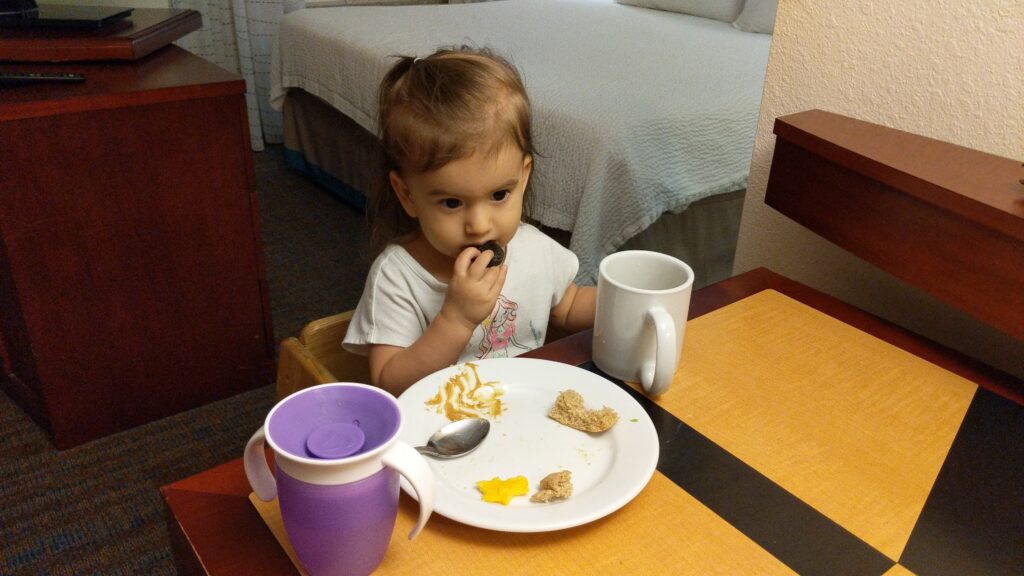
I don’t know about you, but my toddler’s taste buds already have limited preferences. So initially, cutting out bread, nuts and seeds – which combine to create about 50% of her dietary intake – did not feel like a realistic option for me. So instead of eliminating all these foods, I began to focus on cutting back on them and soaking my bread flours and nuts.
It’s not as difficult as it may sound to reduce the phytic acid in your child’s food. If you want to keep it simple, just start with soaking. While sprouting your own grains, drying them out and grinding them into flour might sound like a pain, soaking, on the other hand, is surprisingly simple and easy.
Weed ’em & Reap has a thorough, easy-to-understand explanation of why, what and how to soak, sprout or sour leaven.
3. Increase Minerals & Vitamins
Increasing minerals and vitamins in your child’s body can be done in several ways. The advice I have received and discovered has included ideas ranging from eating particular foods to taking supplements to using remineralizing topical treatments.
Below I discuss the options I am pursuing for my daughter, although there are a lot of other possibilities for natural tooth decay remedies out there.
Food
Aside from eleminating or reducing phytic acid from your child’s diet, many remineralization enthusiasts encourage a diet consisting of organic, farm raised meats, (raw) milk and butter, cod liver oil, eggs, vegetables and fruits. The idea is to include a lot of healthy fat, protein and produce.
Another supposedly superfood source of nutrition is bone broth, preferably homemade. This is another one of those things that can sound intimidating if you’ve never done it, but it really is not difficult at all. There are plenty of recipes online proving how simple it is to make, and it may be well worth the effort for your child’s teeth and her overall health.
As I mentioned earlier, the theory is that tooth decay is a sign that your child’s body is lacking sufficient nutrients – nutrients that traditional people groups have abundently due to their un-modernized diets. If your child’s body does not have enough essential nutrients, it has to rashion them to the most important organs and therefore fails to supply necessary nutrients to his teeth.
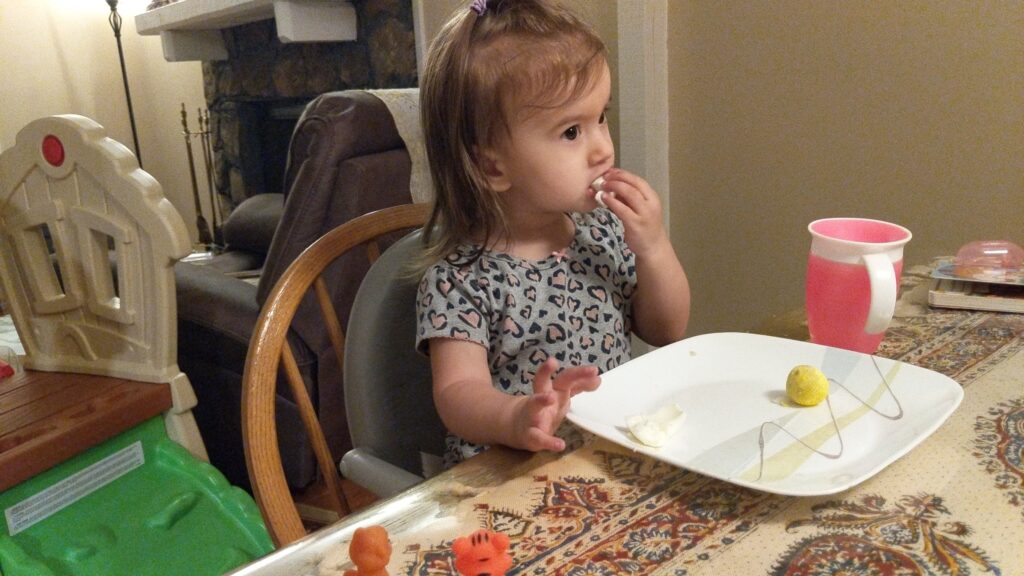
You can read more about this philosophy on the Weston A. Price Foundation website.
Supplements
The key vitamins and minerals your child needs and is quite possibly defficient or insufficient in include vitamin D3, vitamin K2, vitamin A, calcium, magnesium and oral probiotics according to Ask the Dentist.
After reading over and over about the common insufficency of these vital nutrients in the western diet and how it can impact tooth health, I went on a search for some supplements for my daughter. After carefully reading and re-reading the lists of ingredients and vitamins contained in each suppelement, these NaturePlus animal shaped dental health vitamins for kids are what I ended up buying.
These were the only tooth health vitamins I found online for young children that do not have an endless list of questionable or unpronouncible sweeteners or fillers. They are sweetened with xylitol which is actually good for your child’s teeth instead of encouraging decay.
They do also contain fig and date extracts, but I would much rather have that than other artifical or processed sugars that are in many of the other brands of children’s vitamins. And we mama’s know that children’s medicine is only as effective as how tasty it is, so there has to be some kind of sweetener.
This one is a winner with my daughter who can be very difficult to get medicine or vitamins into. She loves the taste as well as the different cute little animal shapes.
I also purchased this MaryRuth’s liquid vitamin K2 to sneak into my daughter’s food or drink each day since vitamin D3 and calcium are only useful with this coworker that is, unfortunately, missing from the NaturePlus vitamins.
Again, I looked over several options trying to find an obviously child-friendly version that listed a dosing amount for a 2-year-old. I could not find this information in the pictures on Amazon, but once I looked at MaryRuth’s website, I did find the dosage amount for 2-3-year-olds which is also on the label of the bottle.
Update 6/8/2023: I no longer recommend the Mary Ruth’s brand of vitamin K2, because I have recently seen a lot of negative reviews regarding quality problems with one of their other liquid vitamin products. Instead, I would recommend either Child Life New! Organic Vitamin K2 or Carlson – Kid’s Super Daily K2. Please always pay attention to dosing instructions for your child’s age.
The ChildLife vitamin K2 has dosing instructions for infants up to age 4+. Dosing info and ingredients can be found on IHerb. This one is flavored, so it may be harder to hide in a drink or food.
The Carlson vitamin K2 states it is for age 4 and up. I am guessing this is because it is a slightly higher dose. I like that a dose of this one is only one drop, but that also means it cannot be adjusted to a smaller dose. Please consult with your child’s pediatrician on whether this dose would be safe for your child depending on her age.
Topical Treatments
I went searching for the best toothpaste for sensitive, decaying teeth as soon as I discovered the battle going on in my daughter’s mouth. I first bought a kids toothpaste from Walmart that had fluoride in it but was alarmed by the warning in all caps on the bottle stating “DO NOT SWALLOW.” Odd, since this toothpaste was supposedly for children as young as two.
It turns out, fluoride is not as safe of a cavity treatment as we’ve grown up being told. It is, shockingly, more toxic than lead and the U.S. has vague standards in place for how much fluoride a person can safely consume. Check out FlourideAlert.org for more info on that.
After discovering the questionable safety of fluoride, I began my search for a remineralizing, natural, fluoride-free toothpaste from a source I could trust. At first I looked into making my own toothpaste, but I became overwhelmed by trying to make sure every ingredient in various recipes was safe for my toddler in the amounts listed.
Eventually, I found Happy brand toothpaste. Although the company seems to be small and undiscovered currently, I love that the website lists every single ingredient that is in their tooth powder and pastes with detailed descriptions about what each one does and where it comes from.
(If you do end up ordering this truly amazing natural toothpaste, I sure would appreciate the discount I get on my next purchase if you use my name – Marissa Khosh – as your referral source.)
Edit 4/10/2024: I currently receive free product as a result of referring so many readers to purchase Happy toothpaste. However, I continue to recommend this toothpaste not because of the free or discounted products I receive, but because my daughter’s teeth have visibly improved over the course of the past four years of using this toothpaste. Read about the best dental report she’s ever received at her recent dental exam here.
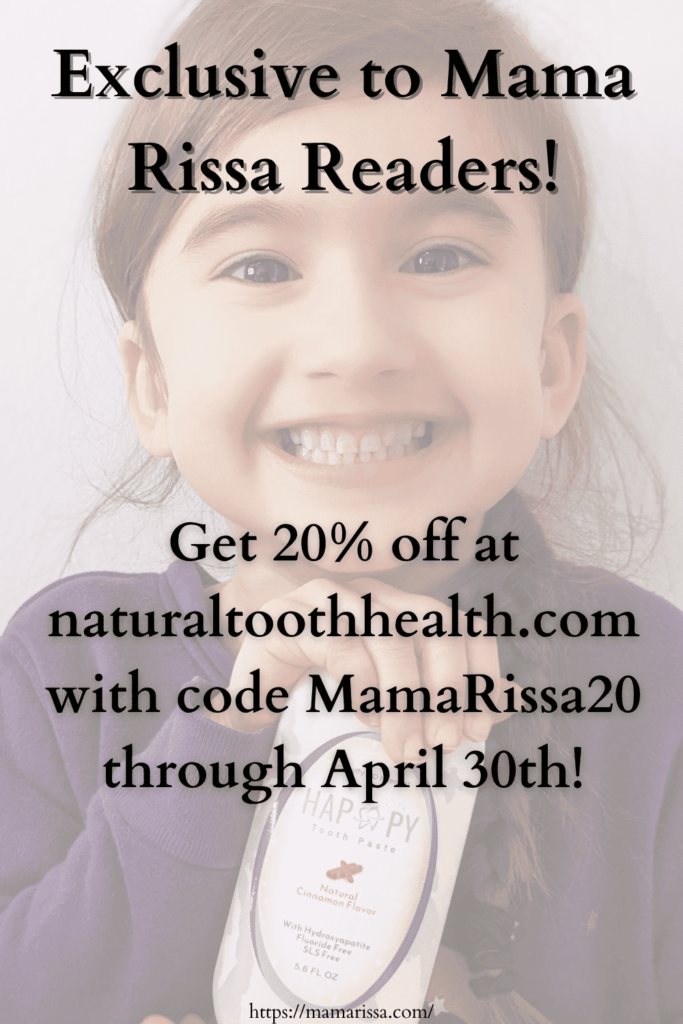
4. See a Bio Dentist
I just got back from a trip out of town to take my daughter to a biodentist 3 hours away after a local dentist told me she needed to have several fillings and crowns put in, requiring general anesthesia.
I am so incredibly grateful to have found this natural-minded dentist who seeks to find and treat the underlying cause of tooth decay. There is a world of difference in the experiences I had at my local pediatric dentist versus the biodentist.
As kind and understanding as the pediatric dental office was, they didn’t bat an eye over their quick conclusion that my 2 year old child should be heavily sedated to perform extensive treatment on her teeth that could easily be undone if we didn’t find the source of the problem.
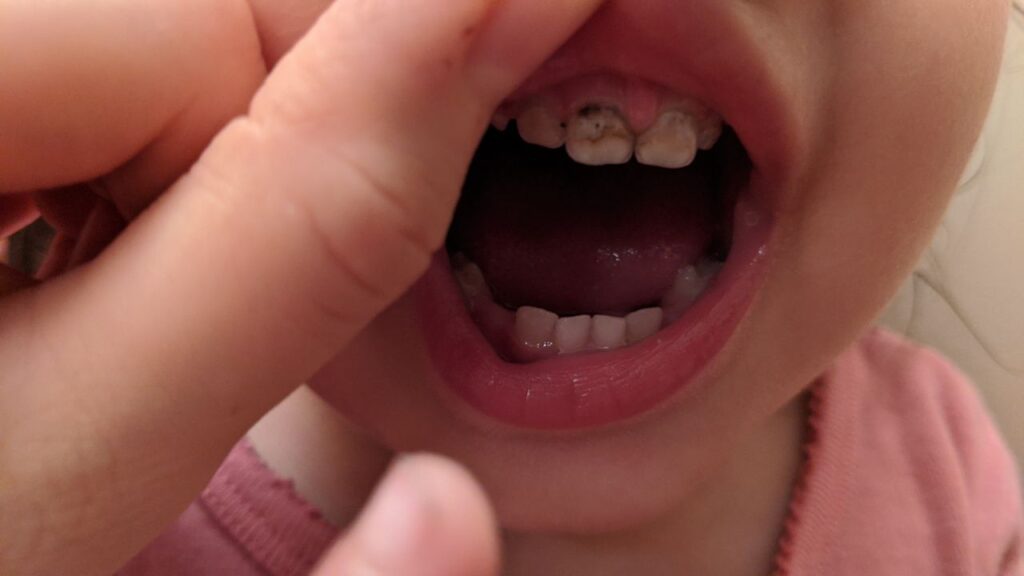
By contrast, the biodentist examined plaque from her teeth under a microscope, showing and explaining to me what was going on at a biological level.
The hygienist was surprised to see that the bacteria in my daughter’s mouth was not as active as would be expected for her degree of decay.
What she did find, however, has quite possibly opened the door to finally understanding not only my daughter’s early childhood tooth decay, but also the acid reflux she has suffered with since the day she was born: Lots of mature, thriving candida.
Read about our infant acid reflux journey here.
In addition to this amazing discovery, the biodentist provided me with hope that my daughter’s teeth can potentially be saved without invasive treatment that requires heavy drugs, at least for the foreseeable future.
He informed me that my daughter’s diet, despite being very low in processed sugar and junk food, is still feeding the enamel-destroying organisms in her mouth. In order to halt and possibly heal the decay (not to mention her reflux), we need to eliminate as many carbs and sugars as possible – even the natural ones.
This is why I feel breastfeeding may be contributing to her early childhood tooth decay. Even though breastmilk is completely healthy, just like fruits and starchy vegetables, it is still food to candida, enabling it to grow out of control.
However, I do not think her tooth decay began because of breastfeeding. I think her tooth decay – and her reflux – is the result of the antibiotics I had during labor triggering the candida overgrowth which has subsequently been continuously fed by various healthy sugars and the absense of the restoration of other healthy bacteria.
So we are currently working on addressing the candida overgrowth in order to halt and hopefully heal her tooth decay.
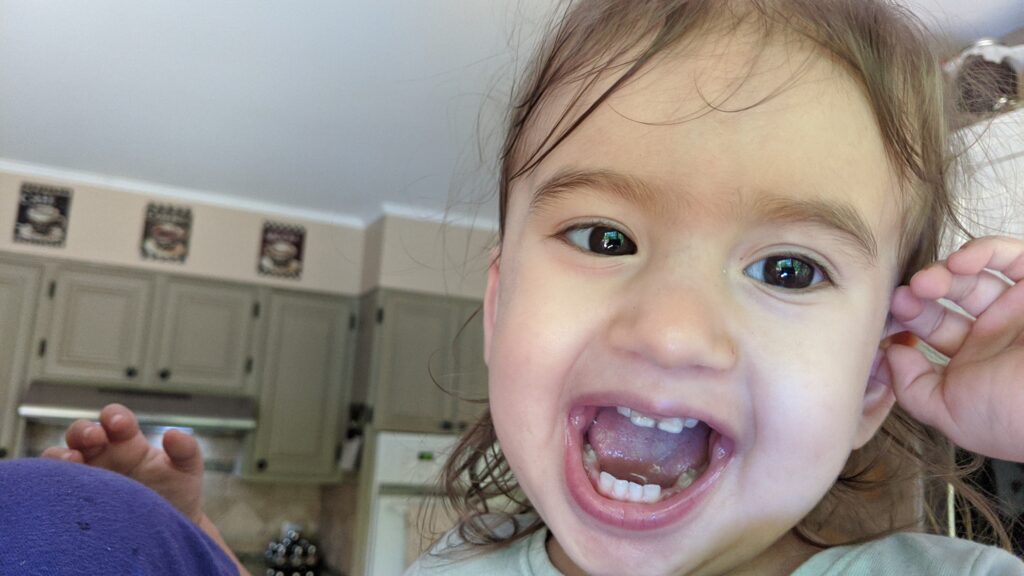
In addition to this, we will be taking her back to the biodentist every 2-3 months to have ozone treatments done on her teeth to kill bacteria and harden the weakened areas of her teeth. A much safer, less invasive treatment than anesthesia, crowns and fillings for my 2-year-old.
Did I mention how relieved, hopeful and grateful I feel to be taking her to a biodentist?
Edit 4/6/2024: The ozone treatments my daughter received at the bio dentist were extremely effective and helpful for stopping her decay. After visiting the bio dentist for a year and a half, we moved to a new state and had to find a new option for ozone treatments. We ended up using this blue jar of PurO3 ozonated olive oil to protect my daughter’s teeth from decay and sensitivity. It has been very effective. It is also a much more economical way to administer ozone treatments.

My Plan of Attack Against Early Childhood Tooth Decay
I’m sure this is not the end of my researching and discovering in the realm of my daughter’s early childhood tooth decay. But I’m happy to end this post able to say that I feel we are headed on a good path right now.
At this point, my plan of action for my daughter consists of the following priorities we have already begun implementing:
- Follow a strict anti-candida diet
- Eliminate/reduce phytic acid as much as possible
- Incorporate bone broth into every day
- Brush and encourage sips of water after meals and snacks
- Use remineralizing toothpaste
- Give her decay-preventing vitamins
- Get regular ozone treatments
I don’t know what will happen with my daughter’s teeth. But I have hope that we can save them, and for now, that is enough.
Is your child suffering with early childhood tooth decay? Please share your experience in the comments! And don’t forget to share this post (via the buttons below) with other mamas who are searching for answers!
Update: Find out what my daughter’s tooth decay was like 3 months later in this post!
Update #2: Check out this most recent update on my daughter’s teeth 2 1/2 years after discovering the decay, and find out what your options are when the dentist mentions crowns.
Need more support as you figure out this childhood tooth decay thing? Join my Facebook support group for parents of young children with tooth decay!

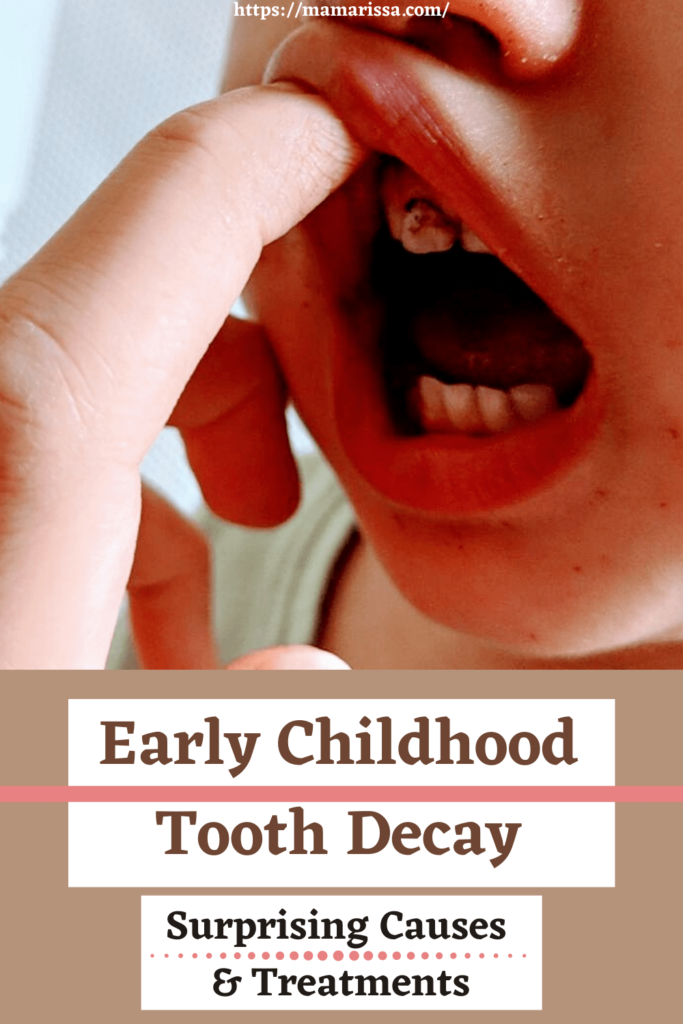

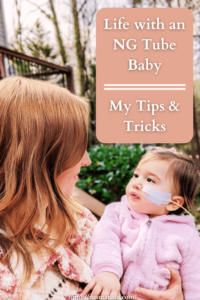
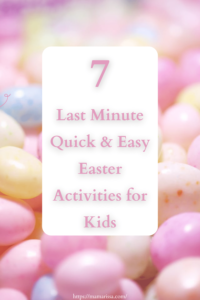
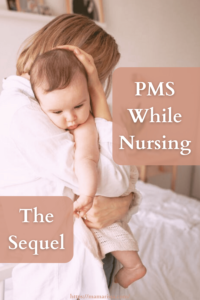
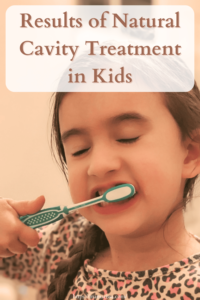
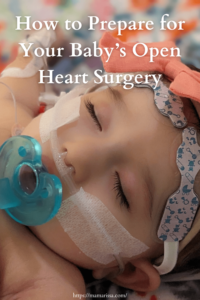
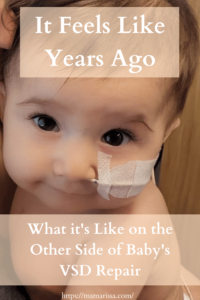
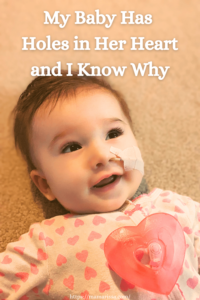
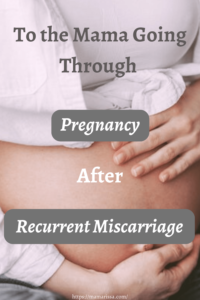
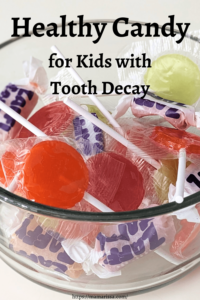
Leave a Reply